How to grow lavender from seeds?
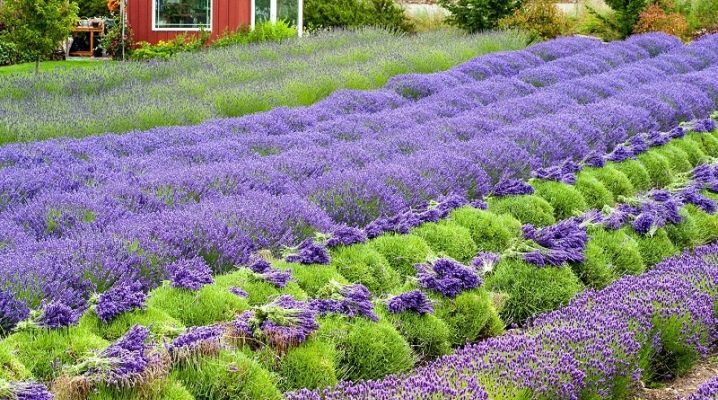
Growing lavender can be challenging, but the result is worth it. For example, a mandatory stage of the process is the preliminary stratification of the planting material.
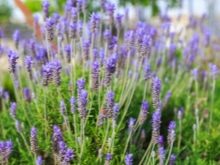
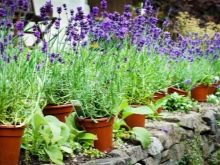
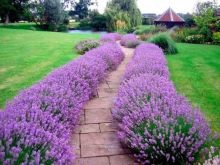
The choice of planting material
When purchasing lavender seeds in a store, you should give preference only to products from a trusted manufacturer. Do not trust the low price, since this culture itself is quite expensive. Cheap grains are often counterfeit. On the bag in which the planting material is placed, there must be a detailed characteristic of the variety, the expiration date, as well as instructions for sowing. It is recommended to pay attention to the appearance of the packaging: it should not be wrinkled, torn or damaged in any way.
It is a good idea to harvest lavender seeds yourself from plants growing in your own garden. To do this, you need to cut off the branches on which the inflorescences have fully opened, and put them to dry. When the flowers are dry, it will be very easy to remove the seeds. There is also an option to let the fruits dry right on the bush, that is, keep them there until the beginning of autumn. Already in September, on a sunny day, dry inflorescences are collected, which are immediately transferred to a paper or linen bag. After the blanks have spent several days in a dry and well-ventilated place, you will need to grind them right in the bag so that the dark peas fall out of the dry debris.
Only high-quality material is suitable for sowing: whole seeds without the smell of rot and any spots on the surface. It is good if all instances are of equal size. It should be mentioned that lavender has excellent germination, and therefore it is not at all necessary to always use freshly harvested material. If the seeds are stored correctly - that is, in a hermetically sealed container located in a dark and dry space, then 5 years later they will be able to be used.
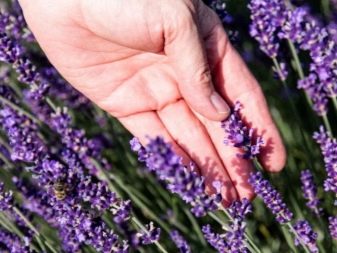
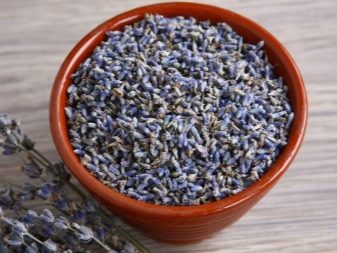
Popular varieties
When choosing a planting material, the plant variety should also be taken into account. Successful cultivation of a crop in open ground in the middle zone, as well as in the Urals and Siberia, is characteristic of frost-resistant species, for example, decorative narrow-leaved lavender, often referred to as "English". This variety forms a perennial dwarf shrub. The lower part of its shoots becomes woody, after which it is covered with foliage, and narrow purple buds open on top.
The height of such a plant does not exceed 30-60 centimeters, and the width is 100 centimeters.
- The variety called Voznesenskaya 34 is actively used in horticulture. He is not afraid of low temperatures and, in addition, adapts well to temperature jumps.
- Frost-resistant variety "Uslada" can develop in arid regions on soil that does not receive enough moisture. The variety attracts gardeners with its delicate but rather vibrant scent, which makes it also suitable for making essential oils.
- Lavender variety "Yuzhanka", sometimes referred to simply as "Yuzhnaya", is the result of the activities of domestic breeders. It belongs to a narrow-leaved species, and therefore is characterized by good frost resistance. The advantage of this variety is that its seeds do not even require stratification.
- "Purple Haze" intended for breeding in the regions of central Russia, Moscow and the Leningrad region. Small bushes, not exceeding 20-25 centimeters in height, are abundantly strewn with flowers.
This variety has good immunity that protects it from pests and diseases.
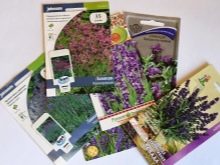
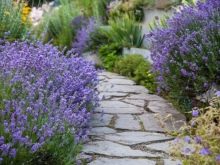
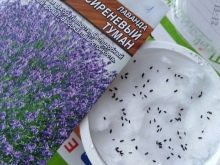
Seed preparation
Despite the fact that some varieties of lavender can be planted without prior stratification, in most cases this procedure is still carried out. Such hardening improves the germination of the crop, enhances its resistance to temperature shocks and, in general, makes the shrub more robust.
Planting material requires cold processing, which continues for a long time - about 35-40 days. Stratification itself can be both natural and artificial. In the first case, the seeds are simply planted before winter in order to be able to cool down, already being in the ground.
Artificial stratification implies that the seeds stay in the cold before direct sowing.
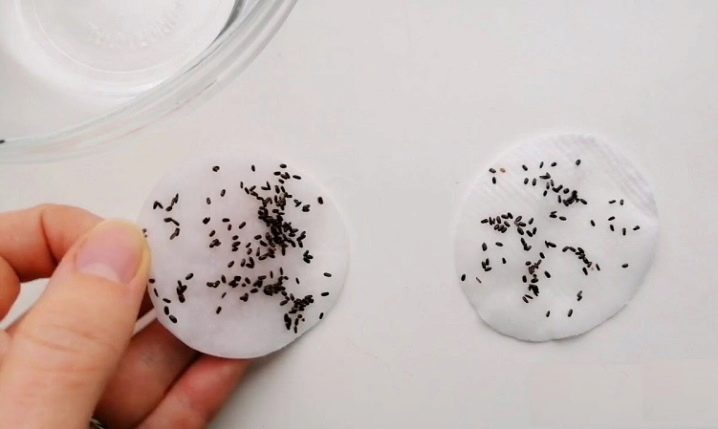
There are several ways to harden lavender seeds at home.
- The first requires the use of cotton pads, which are laid out in one layer on a container or tray. Their surface is thoroughly sprayed with warm, settled water from a spray bottle. Lavender seeds are also laid out on the discs in one layer. Since the grains are very small in size, it will be more convenient to move them with a wooden stick, one end of which is dipped in a drop of water. When all the material is in the container, it will need to be covered with another layer of cotton pads, also soaked in water. The structure is covered with plastic wrap and put into the refrigerator for about a month.
- Stratification on cotton fabric is carried out in a similar way. A fragment of an old sheet or towel is also placed inside the container, moistened and covered with seeds. Another layer of damp cloth is placed on top, and the entire system, being removed under the lid, is transferred to the refrigerator.
- Finally, the third method allows the material to be quenched in wet sand. or its mixture with moistened peat and sawdust. The steps in this case are similar, but the seeds will need to be slightly buried in the substrate or even just mixed with it.
In all the above methods, stratification should be carried out at a temperature of about 5 degrees Celsius, that is, in the upper part of the refrigerating chamber. In order to successfully germinate the material, after hardening it can also be dipped in a growth stimulant or phytohormone, for example, gibberellin. However, the effectiveness of the use of such drugs is not always satisfactory.
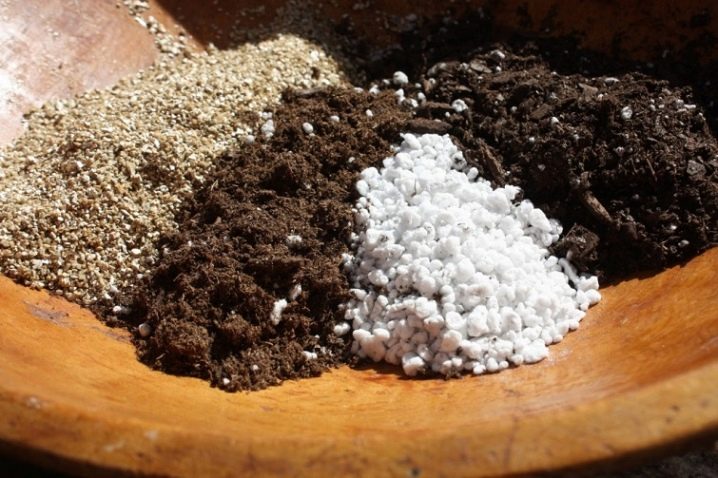
How to sow correctly?
You can plant seeds for seedlings both at the end of winter and already at the beginning of spring. Immediately on open ground, the material is usually sent before winter.
Landing in the ground
Pre-winter sowing of lavender seeds is carried out at the dacha at the end of October. The grains do not go too deep into the soil, after which the bed is necessarily mulched. In winter, the material will undergo stratification, and seedlings will already appear in May of the next season. In principle, there is also an option to sow in open ground in May, when the probability of return frosts becomes zero. In this case, the culture will need artificial stratification.
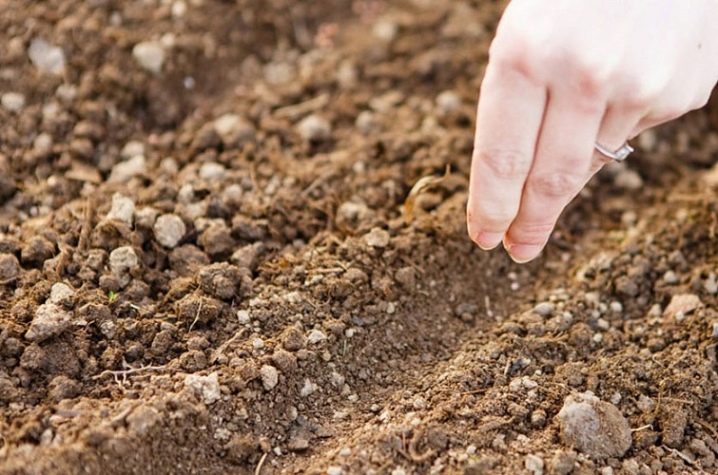
Sowing seedlings
It is recommended to plant lavender seeds for seedlings in containers with a depth of 7 to 10 centimeters, made of plastic, wood or other materials. You can immediately plant all the material in a single container, or you can initially use individual pots or peat tablets. Whatever the container, there must be holes at the bottom for liquid outlet, as well as a drainage layer 1-1.5 centimeters thick. For its organization, coarse sand or perlite is quite suitable.Proceeding step by step, you need to start by filling the pots with soil mixture. It can be a universal soil or a mixture of 12 tablespoons of garden soil, 8 tablespoons of humus and 4 tablespoons of sand. The soil must be disinfected, for example, by steaming. In this case, the soil is carefully laid out on the cloth, after which it is placed in a colander. The dishes, in turn, are kept over the steam for 30 minutes, and their contents are regularly stirred. You can also use a solution of potassium permanganate. Immediately, the soil mixture can be enriched with biofungicides - "Fitosporin" or "Trichodermin", which can normalize the soil microflora.
The earth is poured into containers in such a way that about 2-3 centimeters remain on top. The surface is sprayed with warm water, after which the seeds are distributed on the surface. They should be laid out one at a time, maintaining a gap of 1.5-2 centimeters. The grains are sprinkled with soil and again sprayed with water. The container is covered with a lid or covered with cling film to create a greenhouse effect inside. The entire structure is transferred to a space in which the temperature is maintained from +18 to +20 degrees. It is much easier to plant material for seedlings in peat tablets. Kruglyashi are laid out in a container, at the bottom of which there is a small amount of water at room temperature. For about 30-40 minutes, they swell, after which the remaining liquid is drained.
With the help of a bamboo stick, small depressions are created in tablets, into which 2-3 lavender seeds are further laid out.
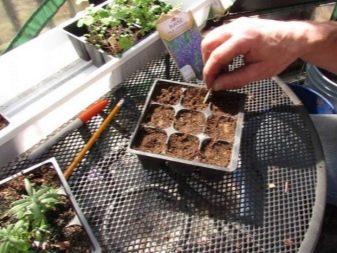
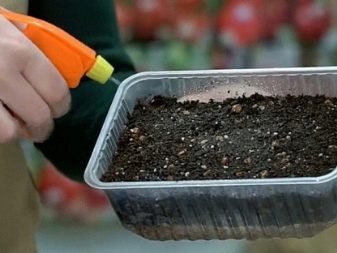
The workpieces are sprinkled with a thin layer of earth or soil and sprayed with warm liquid from a spray bottle. The container is tightened with cling film and placed in a warm and well-lit place, for example, on the sill of a south or southwest window. It is important that the living temperature of lavender does not fall below +15 degrees. During seed germination and emergence, the soil must always be moistened. However, it should not be poured, otherwise the grains will simply die. To maintain the required humidity level, it will be enough to spray the surface with a spray gun once a day. Also, a lid or cling film will have to be removed from the container every day so that airing can be carried out for 20-30 minutes. The first shoots, as a rule, appear after 2 weeks, and their active growth begins generally in a month. The cover is completely removed at the moment when the shoots get stronger.
The necessary picking of lavender is carried out when 3-4 full-fledged leaves appear. For this purpose, pots with a diameter of 5 to 10 centimeters are suitable. The soil will work the same as that used for the seeds, but with the addition of sand to make it lighter. A couple of hours before the pick, the seedlings are watered, and at the appointed time they are removed along with the earthen clod. A recess is formed in the pots, allowing the roots to be positioned without bends, after which it is filled with soil with the help of a spatula. The soil is gently compacted and watered. After a week of hardening, seedlings are transplanted onto open ground from the end of May. The garden bed is to be organized in a well-lit place with nutritious loams or sandy loam soils. Sour soil is pre-normalized with wood ash or dolomite flour. Small holes are dug out at a distance of 30-40 centimeters from each other, after which sprouts are transferred into them by transfer. The soil around the plants is compacted and watered abundantly. Immediately, the culture will need a mulching layer.
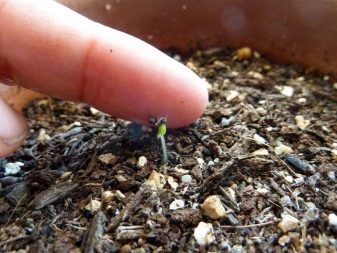
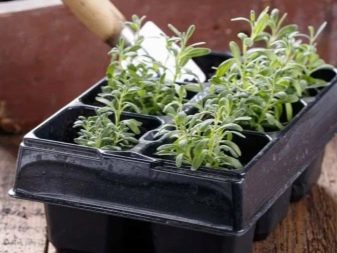
Follow-up care
Growing seedlings on the site will be successful only if all the requirements of agricultural technology are met. So, even if lavender blooms in the first year, the inflorescences will need to be almost completely cut off so that the bushes get stronger instead of wasting energy on flowering. Usually, no more than a quarter of the formed inflorescences are left. It is also impossible to grow a crop without regular weeding and weeding. In the first winter, it is recommended to protect lavender with a thick mulch layer of spruce branches or dry foliage.
Watering for young seedlings is required as the top layer of the earth dries up. The slowly growing plant is fed with a mineral complex containing potassium, phosphorus and nitrogen, for example, nitroammophos. The vital activity of pests is eliminated by such insecticides as "Aktara", and "Previkur" successfully copes with fungal diseases. In the event that lavender grows in a pot on a windowsill, it will have to be looked after in approximately the same way. It will have to be irrigated as it dries in order to prevent the soil from rotting.
The pot should be located in a well-ventilated and well-lit place. If necessary, the plant will need to be illuminated with an ultraviolet lamp.
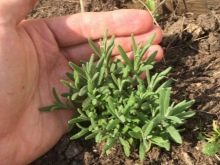
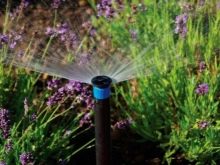
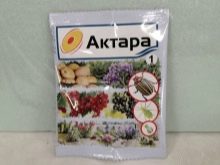







































































































The comment was sent successfully.